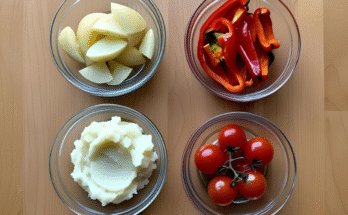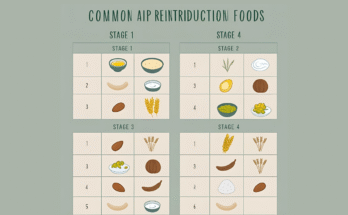AIP reintroduction mistakes can impede the process and cause setbacks. Know what to avoid to successfully transition to a more long-term recovery.
The AIP (Autoimmune Protocol) diet is designed to recognize food triggers and reduce inflammation. The elimination stage is strict, while the reintroduction phase demands equally much planning. Making mistakes during this phase could delay your results, cause symptoms, or even deter you from finishing the process.
Let’s look at the most frequently made AIP mistakes when reintroducing and ways to ensure long-term success.
Rushing the Process Too Quickly
One of the biggest mistakes is to move too quickly. Reintroducing food too quickly or too soon could confuse. The body requires time to determine if the food triggers reactions.
Tips: Introduce one food at a given time and then wait 3-5 days before introducing another.
Reintroducing Multiple Foods at Once
Experimenting with more than one food at a time can be tempting, especially when you’re trying to increase your food choices. If symptoms do return and you don’t know what food was the culprit.
Tips: Try testing one ingredient at a time and then isolating the variables by eating the food item in its purest form.
Not Tracking Symptoms Effectively
Without a journal, it’s virtually impossible to detect patterns. The majority of symptoms don’t show up immediately. They may appear 3 to 7 days after.
Tips: Keep a thorough diary of your food and symptoms. Note the food you consume as well as how you feel. This will help you track your sleep patterns, energy levels, mood, and digestion.
Ignoring Mild Reactions
The mild symptoms, like fogginess, light bloating, or mood swings, are often ignored. They could be a sign that your food regimen isn’t working properly for your body at this time.
Tips: Take every reaction seriously, no matter if they appear more subtle. These can be signs of intolerance.
Choosing High-Risk Foods Too Early
Starting eggs, nuts, or nightshades immediately increases the risk of having adverse reactions. The AIP Reintroduction Stages are designed to reduce the chance of a negative reaction.
Tips: Begin by eating foods that are least risky starting at Stage 1. Develop confidence before you try more inflammatory foods.
Letting Emotions Take Over
A feeling of hopelessness or impatience could cloud your judgment. Reintroductions are a test and not an incentive. The temptation to let frustration or cravings dictate your choices could result in a negative outcome.
Tips: Approach each new food with a scientific approach. No matter if the results are favorable or unfavorable, you’re gaining valuable knowledge.
How to Stay on Track During AIP Reintroduction
It is easier to avoid making mistakes if you have a plan in place:
- Keep track of the official Reintroduction phases.
- Try a new food every day.
- Use plain products with a single ingredient.
- Track symptoms daily.
- Keep calm and be patient with the process.
- Find support from others in this AIP journey.
Moving Forward With Confidence
Making mistakes during the AIP reintroduction phase are common but they shouldn’t be the sole reason for your path. If you are aware, attentive and maintaining an unwavering pace it is possible to maximize this opportunity to heal.
Every reaction is a lesson. Every food that is effective is a win for you. Continue to learn, remain consistent and rely on your body’s ability to guide you towards long-term health.
FAQs About AIP Reintroduction Mistakes
Q1: What if I already made some of these mistakes?
That’s okay! Pause, return to your elimination base, and resume reintroduction more slowly. The process is flexible.
Q2: Do I have to start over if I mess up?
Not necessarily. Just give your body time to recover and retest foods later. Focus on clarity over speed.
Q3: How do I know which food caused a reaction?
That’s why it’s important to reintroduce only one food at a time. If you suspect a reaction, remove the food and note any changes.
Q4: Can I reintroduce a food again if it caused symptoms the first time?
Yes. Some foods may be tolerated later as your gut heals further. Wait a few weeks or months and try again slowly.
Q5: What should I do if I’m unsure about a reaction?
Go back to your baseline AIP foods for a few days and watch your symptoms. Reintroduce a different food later to avoid confusion.
Q6: Is it necessary to reintroduce every AIP-restricted food?
Not at all. Only reintroduce foods you want in your long-term diet. If you don’t miss it or don’t enjoy it, there’s no need.
Q7: Should I consult a practitioner during reintroduction?
It’s highly recommended, especially if symptoms are unclear or severe. A professional can help guide decisions and troubleshoot challenges.



